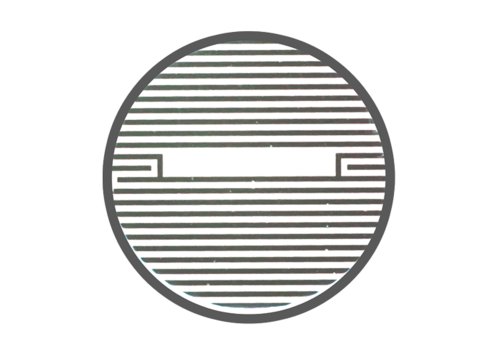What you will learn in this 12-minute webinar:
- >> About the promises and challenges of cultured meat.
- >> How the Maestro Z impedance assay can be used to optimize media components.
- >> How IGF1 could be a lower cost alternative to insulin and can rescue proliferation in serum-free media.
About the presenter:

Jenna Al-Saleh
University of Georgia
Novel Farms, Inc.
Berkeley, California
Jenna Al-Saleh completed her Masters at the University of Georgia in tissue engineering with a focus on 3D models of breast cancer metastasis. She joined Novel Farms in 2023 as their Senior Research Associate of Tissue Engineering and is currently involved in media development, tissue engineering, bioreactor design, and bioprocess development.
Transcript of the webinar:
Host: Thank you for joining our Coffee Break Webinar.
The goal of cultured meat is to produce sustainable, ethical, and scalable alternatives to traditional meat, addressing issues such as reducing greenhouse gas emissions, conserving land and water, enhancing food security, and eliminating animal slaughter. While cultivated meat holds promise for revolutionizing the meat industry, cost and scalability remain significant challenges. In this Coffee Break webinar, Jenna Al-Saleh discusses how Novel Farms addresses these challenges by investigating low-cost alternatives to media components using the Maestro Z impedance platform. Jenna completed her Masters at the University of Georgia in tissue engineering with a focus on 3D models of breast cancer metastasis. She joined Novel Farms in 2023 as their Senior Research Associate of Tissue Engineering and is currently involved in media development, tissue engineering, bioreactor design, and bioprocess development.
Jenna Al-Saleh: Hi, and thanks for having me. Today, I'm going to be talking about a project that we have been working on with Axion BioSystems. The project's title today is "IGF-1 Rescues Proliferation in Cells Grown in Serum-Free Media."
So, what is cultured meat? Cultured meat is edible tissue created using materials, tissue, and cell engineering techniques. It is set apart from vegan proteins by using animal cells in the final product. Some products are 100% animal cells, while others use an edible plant-based biomaterial scaffold to form the meat. The ratio of animal cells to edible biomaterials varies from company to company. Cultivated meat arose in the early 2000s when Jason Metheny was inspired by NASA's research into creating alternative protein sources for long-term space missions. Metheny created New Harvest, a nonprofit organization dedicated to in vitro meat research. The race to create the world's first lab-grown meat began, and a decade later, Mark Post's lab at Maastricht University debuted the first cultivated burger and tasting at a 2013 London news conference. In 2020, Singapore approved JUST Eat's cell-cultured chicken for sale, marking a milestone in the industry and birthing many cultivated meat startups such as Aleph Farms, Upside Foods, Believer Meats, Wild Type, and us, Novel Farms.
So, why pursue the long process of developing and researching cultivated meat? Cultivated meat has the potential to solve some of the climate, resource, and ethical problems of the current meat industry. It's important to note that no company has been able to produce in vitro meat at scale compared to slaughterhouse methods, but projections have been made based on current processes. Financial analysts have predicted that cultivated meat has the potential to significantly reduce greenhouse gas emissions, land, and water usage. Cultured meat can also be produced indoors during unfavorable weather, potentially reducing food insecurity issues. Additionally, since it is sourced from animal cells, it removes the need for slaughter, which has been a continued ethical issue in the United States.
As promising as the potential for cultivated meat is, there are two major issues facing the industry, bottlenecking its fruition: cost and scale-up. We won't be discussing scale-up issues in today's discussion, but we are currently attempting to solve them in-house using bioreactor design and cell culture techniques. Cost is a major hurdle we are also trying to navigate. The first burger presented at the 2013 news conference cost a total of $332,000 to make. Harrison and colleagues at the Agricultural Economics Department of Oklahoma State University conducted a cost analysis in 2022, predicting that, on average, the price of cultivated meat would be $63 per kilogram under the best conditions. The largest proponent of this cost is the growth medium used to grow cells, with a significant portion of that cost attributed to fetal bovine serum (FBS), which is used in almost all media. We largely aren't sure of the components within FBS that contribute to cell growth.
Novel Farms has technology that can make proteins at a cheaper cost, but we need to determine the most important components of cell growth media needed for cell proliferation. Our study aimed to monitor the impact of different media formulations on the growth rate and differentiation of C2C12, a murine myoblast cell line, to determine which FBS components we can add to our scaffolding technology as a drastically cheaper alternative to FBS. Colorimetric assays such as Alamar Blue and PicoGreen are commonly used to detect cell proliferation. Alamar Blue measures metabolism by the reduction of resazurin via NADH and other metabolically reductive species. Metabolism cannot always be related to cell growth; for example, many cells reach senescence at confluence, where metabolism slows down and may appear as if cells aren't as confluent as they actually are. PicoGreen can help us detect actual cell numbers, but it is an endpoint assay, which would mean needing several time points and repeating the assay, making it inefficient and costly.
Previously, we used imaging to evaluate cell growth, but manual images have incredibly low throughput and are time-consuming for the number of formulations we need to test. In addition, using microscopy only allowed for qualitative measurement. The Maestro Z provided us with a quantitative approach for assessing confluence. The Maestro Z impedance assay offers a highly sensitive, label-free, and non-destructive way of monitoring cell proliferation over time. Axion's 96-well CytoView-Z plate integrates a recording electrode directly into the culture surface of each well, enabling direct measurement of growing cells. This design allows for minute-by-minute data collection without any extra effort, while the 96-well format ensures high throughput, perfectly suited for rapidly testing multiple formulations.
The first step we wanted to do on the Maestro Z was determining the optimal plating conditions for our cell proliferation studies. Since the CytoView-Z plates aren't tissue culture-treated, we wanted to see if we could grow cells without using an additional cell coating or if coating with laminin improved cell growth on CytoView-Z plates. Using Alamar Blue studies, we saw higher metabolic performance on wells coated with laminin than on wells without. From this information, we coated our plates with laminin for all studies.
The next test was determining the optimal seeding density and cell number related to resistance measurements. Serial seeding of the plate showed us that there is a difference in resistance measurements as you increase seeding density. The higher the confluence, the higher the resistance to exposed electrical current. We also found that 10,000 cells per milliliter would give us the optimal growth curve for the next 96-hour studies we wanted to perform.
Next, we wanted to determine the importance of insulin, a component in FBS, in cell growth and proliferation, and if we could use insulin-like growth factor (IGF-1) in its place as a cheaper alternative using our technology. Insulin helps with glucose uptake via the insulin receptor, beginning a pathway to create GLUT4, which transports glucose into the cell for metabolism. IGF-1 typically activates the IGF-1 receptor but also has a low affinity for the insulin receptor and can sometimes activate glucose uptake. This makes it a potential replacement for insulin in cell culture media. Given that insulin in previously used serum-free media, such as the Essential 8 media the Good Food Institute studied, costs about $7 per liter of media, we used the Maestro Z to determine if insulin in media affected cell growth and if replacing insulin with IGF-1 could reverse any detrimental effects from insulin removal.
We see, using both impedance measurements, live/dead screening, and metabolic studies, that there's a drastic difference in cell proliferation with and without FBS. We also see that while not performing as highly as serum-containing media, our serum-free alternative containing insulin provides cell support, indicating that it would be a good base media to start with as we add and remove components. Lastly, in all three testing methods, we find that the removal of insulin does have a negative impact on cell growth and that by adding IGF-1, we are able to mitigate those effects. This indicated that IGF-1 is a viable alternative to insulin when creating our serum-free alternatives.
A second study we were curious about using the Maestro Z was if we could detect differentiation using resistance measurements. When muscle satellite cells become confluent, they begin to differentiate via fusion into multinucleated fibers. We predicted that because there were larger cells and less space on the plate, it would possibly allow more current to move through the plate. For this study, we grew cells to confluence and then switched the differentiated group to 2% horse serum, which ignites differentiation. We then took images of the differentiation to confirm that it was occurring. We saw a slight decrease in resistance compared to undifferentiated C2C12s. This shows we can possibly detect differentiation with the Maestro Z but would require further study to confirm if we can detect differentiation numerically. It can help us determine what media in the downstream process are better for differentiation and efficiency. This is important when we've grown our cells in a primary bioreactor and then transferred them to a secondary reactor for differentiation into meat.
Based on these studies, we confirmed that insulin is both an important factor for cell growth and that we can replace it with the cheaper alternative IGF-1. The Maestro Z confirmed what we saw metabolically and visually for cells in different media. We also were able to possibly detect differentiation with the Maestro Z, which in the future could help us determine differentiation efficiency at scale-up and maybe down the road, numerical aspects of transdifferentiation in cells that can differentiate into both fat and muscle. However, we need more research to confirm this. The Maestro Z has potential as a tool in the cultured meat industry and offers the advantage of directly monitoring cell proliferation and viability label-free and in real time. It also provides high throughput data collection for testing several media formulations simultaneously without the labor and cost-intensive process of repeating multiple endpoint assays.
One challenge, however, is the need to coat the plates in laminin or some sort of coating for consistent cell growth, which poses a challenge for scale-up in bioreactors. One future direction is the possibility of using Axion's live cell imaging platform to monitor cell growth in tissue culture-treated plates. The Omni imaging platform can measure cell proliferation across multiple wells in any transparent culture vessel while providing fast, hands-free, reliable data acquisition. Adding an imaging component would be an added benefit for generating cell counts that could later be related to future biomass in the reactor.
Thank you so much for listening. If you have any questions, you can direct them to me at jenna@novelfarms.co.
Host: And that is the conclusion of today's Coffee Break Webinar. If you have any questions regarding the research presented or if you are interested in presenting your own research with microelectrode array technology or impedance-based assays, please forward them to coffeebreak@axionbio.com. Thank you for joining today's Coffee Break Webinar, and we look forward to seeing you again.


